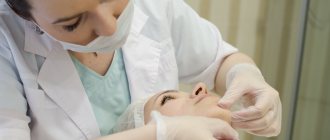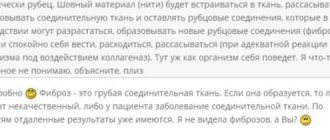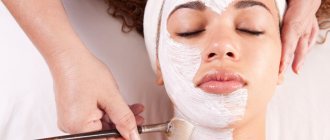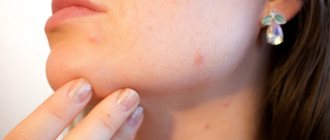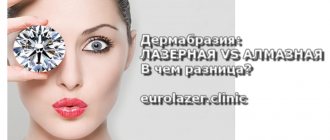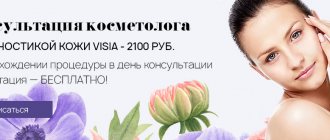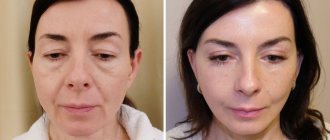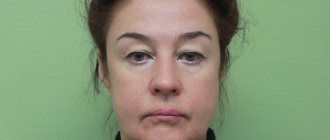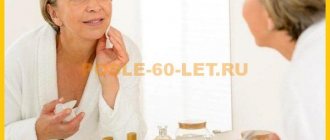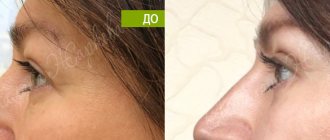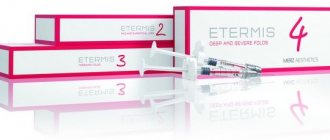Thread lifting is a very popular procedure. The procedure is effective, minimally invasive and at the same time carried out at a relatively low cost, especially in comparison with surgery.
Today, even those who do not yet plan to carry out any rejuvenation procedures know about “thread face lifting,” “reinforcement,” and “thread lifting.” This is not surprising: thread lifting is a very popular procedure. The procedure is effective, minimally invasive and at the same time carried out at a relatively low cost, especially in comparison with surgery.
But even patients who come to our cosmetology clinic directly for the purpose of thread face lifting do not have a very detailed idea of how exactly “thread lifting” works and what is the secret of its success.
In our Total Charm clinic, it is from the doctor’s appointment, during which all the details and intricacies of the procedure are explained to the patient in detail, all the indications for it, all its advantages and benefits - this is where preparation for the rejuvenation procedure begins, and this is the key to it successful implementation. So let's begin.
Why do you need a thread lift, the essence of the technique
The essence of a thread lift is the introduction of special threads into the subcutaneous layer, which are fixed in the tissues and create a frame (“reinforcement”), due to which the rejuvenation effect is achieved: the skin is tightened, smoothed, and wrinkles are eliminated. An additional effect is achieved due to the fact that the threads stimulate the production of collagen and thus the thread frame receives natural strengthening. The effect of thread lifting is observed for 3-4 years, sometimes more, which is one of the main advantages of this rejuvenation procedure. Also, the advantages of thread lifting are a low risk of complications, quick recovery, and a small number of contraindications for use.
Aptos threads
They are popular not only in Russia, but also in Europe. Invented and patented by doctor Sulamanidze M.A., they have been successfully used for more than twenty years and have proven their effectiveness and uniqueness in the world of cosmetology.
The threads are made from caprolact with the addition of L-lactic acid, which stimulates collagen production. To reinforce different areas of the face, threads of different profiles are used, which allows us to achieve the best result.
Indications for use: initial and moderate age-related changes in the skin of the face, deformation of the oval of the face, sagging skin in the lower part of the face, jowls, nasolabial folds, drooping upper eyelid, double chin, sagging skin in the neck and décolleté area, facial wrinkles.
The main advantages of Aptos threads:
- The rejuvenation effect is observed for up to 5 years.
- ease of implantation, insertion of threads does not require tissue incision, the procedure is minimally invasive.
- variety of threads. An experienced doctor will always select the profile that is optimal for a given area of the face.
- speed of implementation. As a rule, it takes no more than an hour to tighten one area with threads.
- low cost. Lifting one zone will cost an average of 30-40 thousand rubles. And this, of course, is noticeably lower than the price of surgical intervention.
Which threads to choose
Threads for lifting are non-absorbable and absorbable. Moreover, in the case of absorbable threads, the rejuvenation effect is maintained even after their complete resorption, due to the natural “collagen reinforcement”. Also, threads for lifting have different cross-section profiles, additional knots and notches for better fastening in tissues.
The best option will be determined by the doctor of our clinic, taking into account the wishes of the patient, his age, the condition of problem areas, as well as all individual characteristics.
Clovermed threads (Clovermed)
Areas of application: Face and body.
At what age are they recommended: For age-related changes, threads are usually recommended after 40 years.
Duration of action: 3-5 years.
Non-absorbable Spring Thread threads or Clovermed threads (after the name of the manufacturer) were created in France. Today, every stage of production has been brought to perfection, which ensures and guarantees high quality products.
The threads are made of polyester fiber, which is covered with a silicone shell on top. This provides increased strength and elasticity that lasts for many years. Elastic threads do not break, so they cannot distort facial features in any way.
The structure of these threads differs from the others in the large number of teeth (24 pieces per 1 cm). The teeth are rounded and directed in 4 directions. This allows you to create a strong and reliable frame inside the soft tissues.
There are three standard techniques for a facelift: X-shaped, parallel and V-shaped. This allows you to remove sagging areas of skin, smooth out nasolabial folds, and eliminate asymmetry, for example, in case of facial nerve paralysis.
Using threads, you can remove a double chin, tighten your chest and stomach, arms and legs from the inside.
Non-absorbable threads are good because they provide very long-lasting and stable fixation and tissue tightening. Moreover, Spring Thread has a very interesting design. This is a braided thread made of cotton, which is sealed in silicone - a material that has been well studied and is used, for example, to produce implants for breast enlargement. Silicone is absolutely safe, as it forms a capsule around itself. If suddenly for some reason you need to remove the thread from the soft tissues, then in its place there will still be a capsule that continues to hold the achieved result.
A non-absorbable thread is convenient because as soon as the lifting effect begins to decrease, the doctor will be able to tighten the thread and again achieve the desired result.
Features of the thread face lift procedure
Preparation
Of course, it all starts with a consultation with a clinic doctor. The doctor assesses the condition of the skin, age-related changes that require correction, explains in detail all the nuances of the upcoming procedure, and also needs to make sure that there are no contraindications at a given time. A few days before the procedure, you will be ordered to stop taking a number of medications and dietary supplements. Of course, the cost is also announced in advance.
How it goes
Thread lifting using Aptos threads is a minimally invasive procedure. It is performed under local anesthesia. Within 15 minutes after the procedure, the patient can go home; complete rehabilitation takes from several days to two weeks.
Contraindications
Absolute contraindications for thread lifting:
- pregnancy and lactation;
- viral diseases;
- oncology;
- poor blood clotting;
- diabetes;
- severe skin ptosis;
- skin diseases;
- allergy to anesthetic;
- keloid disease.
If the day of the procedure and the menstrual cycle coincide, then it is better to move the lift by several days - during the cycle, blood clotting worsens, which is a contraindication.
Healing period after the procedure
Facial care
For two to three days, it is necessary to periodically apply cold to the correction area. You should also refrain from eating hot food and drinks during this time. In the next month you should refrain from visiting the bathhouse and sauna. On days 7 and 14 after the procedure, you must visit the clinic doctor.
Possible complications
If pain persists, the use of analgesics is acceptable. To speed up the recovery process, the clinic doctor may recommend using products that reduce swelling, for example, Recowell cream.
Side effects and contraindications
The presence of pronounced excess skin of the face, pronounced atony of the skin, acute inflammatory diseases in the area of correction, acute respiratory viral infections, the presence of an acute phase of chronic diseases.
What not to do after installing threads
After thread lifting, there are several strict restrictions:
- High temperatures: both external - when visiting a sauna or steam bath, solarium, beach recreation areas, and local: taking a hot shower or bath, eating, drinking. This increases swelling and prevents rapid skin recovery.
- Contact of facial skin with any objects and surfaces , including your own fingers and cosmetics. There is a high risk of skin contamination and infection.
- Washing with water irritates the skin, making swelling worse. With sudden movements and rough wiping, there is a high risk of tissue displacement and asymmetry.
- Active facial expressions, massage . You cannot sit with your chin or cheek on your hand. Any mechanical impact easily provokes displacement of the threads, causing asymmetry, which is extremely undesirable after a facelift.
- Sleeping on your stomach (and in the first days on your side) leads to increased swelling and can contribute to skin infection and displacement of the facelift threads.
- Singing lessons and visits to the dentist will have to be postponed: prolonged tension of the facial muscles can cause the threads to shift.
- Swimming, sports and fitness , intense physical activity are prohibited for a long period - they negatively affect the skin restoration process and provoke asymmetry of facial muscles.
Pros and cons of thread lifting
Main advantages:
- a significant number of indications: with the help of thread lifting, a large number of appearance problems can be solved
- the procedure is minimally invasive, tissues are practically not injured, especially in comparison with surgical plastic surgery
- hypoallergenic. Threads for lifting are made of biocompatible materials that have proven themselves in cosmetology
- noticeable effect, and the effect increases due to stimulation of collagen production
- possible compatibility with other rejuvenation techniques
- carried out on an outpatient basis
- few contraindications
- fast recovery period
The disadvantages of thread lifting include the need to carefully select a specialist to carry out the procedure. A cosmetology clinic doctor must be trained and have the necessary certificate confirming the appropriate level. In this case, all risks will be minimized.
The cost of thread lifting, prices in Moscow
The cost of the procedure depends on the type of thread lifting, the number of threads introduced and the condition of the correction area. The lowest price for thread lifting for one zone is when lifting with Aptos threads.
At the Total Charm clinic, the final cost is always announced immediately, at the initial consultation. This price also includes the necessary consultations with a doctor during the recovery period. You can also read real reviews about thread lifting.
Complications after mesothreads
As a rule, the consequences of using aptos threads do not harm health, but do affect appearance. They can be expressed in:
- bumps on the face;
- fibrosis after mesothreads;
- bumps or pits;
- swelling and hematomas;
- migration of threads under the skin of the face (asymmetry);
- noticeable “tails” from the mesothread or it shines through the skin;
- infections;
- allergies to the components used.
Read more about each possible side effect below.
Bumps and fibrosis after mesothreads
The defect occurs due to medical error or poor-quality material: bumps on the skin may be the result of insufficient tension of the aptos thread or nodules that have arisen. The smartest thing to do is pull out the thread and redo the problem area, or wait several months until the lump resolves on its own.
Another reason may be that during the rehabilitation period, dirt got into the unhealed wound, and the tubercle is nothing more than a source of infection. In this case, you need to take antibacterial drugs prescribed by your doctor.
In addition, relief on the skin can occur due to a hematoma: a large amount of blood accumulates at the site of the thread, which causes an undesirable process. In this case, the doctor pumps out the excess with a syringe.
Fibrosis with thread lifting is the formation of scar tissue. Instead of the intended effect, when collagen grows around the thread in separate fibers, solid fibrous strands appear. They are noticeable in 3-4 weeks, and the sooner their treatment begins, the faster they will go away. If you miss the moment and bring fibrosis to an inveterate nature, it will become almost impossible to remove.
Find out which method of correcting scars and stretch marks is optimal for you!
doctor Svetlana Viktorovna Ogorodnikova.
doctor
Edema and hematomas
When installing mesothreads under the skin, small vessels and capillaries will inevitably be affected, the wound will cause slight inflammation - this is the body’s natural reaction to injury to the epidermis. Because of this, swelling will occur immediately after the procedure, however, it should subside within 2-3 days.
It is believed that the hematoma stimulates the formation of collagen fibers, and therefore it is an indicator of a good procedure.
The risk of bruising - internal hematoma - can be reduced. Namely: stop taking blood thinning medications two weeks before the procedure. For example, Aspirin and Detralex.
Facial asymmetry
All people are slightly asymmetrical; having the left and right sides of the face exactly the same would cause a strange sensation in appearance. But after the operation, the difference becomes more noticeable due to swelling and hematomas. In this case, you need to wait a little until all the side effects of mesothreads resolve.
It’s another matter if the asymmetry is caused by a doctor’s mistake: large “accordion” folds appear on one side of the face or the thread is poorly tensioned. You will either have to wait several months for the defect to go away on its own, or sacrifice the achieved result and pull out the bad threads.
Noticeable “tails” or mesothreads show through the skin
Most often observed in the area of the cheekbones and cheeks - the most mobile part of the face. People with highly developed facial expressions are susceptible to “tails”; in this case, it is worth giving up warm-up, friction and massage for several weeks. The “tails” themselves need to be pulled out; a lack of 2–4 threads will not affect the overall result.
If there is noticeable translucency through the skin, there are two possible reasons for the defect: the patient’s thin, light skin, or the doctor’s unprofessionalism. In this case, you should also pull out the unsuccessful thread.
Infection
Occurs when instruments are not properly processed and hygiene rules are not followed. Most often, the patient himself is to blame for the infection: after the operation, dust, exhaust fumes, or swimming in a public pool should not be allowed.
If this does happen, it is necessary to treat your face with an antiseptic.
When it comes into contact with a wound, the infection is immediately noticeable: the skin turns red and swells. Under no circumstances should the problem be left to chance! If you do not take a course of antibiotics, the infection can cause tissue necrosis with the formation of rough scars.
Pits, accordion folds
The defect occurs due to non-compliance with technology. Either the threads are poorly tensioned or they are placed at the wrong depth. The smaller the fat layer in the area of the pit or accordion, the longer the deformity will persist. On average, the consequences resolve within 1-2 months.
Migration of the aptos thread under the skin
There are several types of mesothreads: smooth, serrated, “spiral”, etc. Based on the task, the doctor selects the right thread. But sometimes it “travels” under the skin, which leads to unwanted defects:
- the ends of the thread come out;
- the contour of the oval of the face changes;
- a noticeable asymmetry arises;
- There is a danger of breaking the surface of the skin - it is necessary to urgently pull out the thread.
It is worth considering that most often the migration of mesothreads is not so terrible, and the consequences go away on their own. The above are extreme cases that occur quite rarely.
Allergy
May occur due to antiseptic or additional substances in the composition of aptos threads. To protect yourself from such a surprise, do not use cheap materials of dubious production, and also take a skin test before the procedure. Based on its results, the doctor will select a mesothread that will definitely suit you.
Thread lifting: reviews of the procedure
“I came for a thread lifting procedure and was very pleased with the specialist’s work. She listened to my wishes and individually selected the types of threads that met my needs. Nelly is a high-level specialist, you can completely trust her, it’s very pleasant to communicate with her, she will listen carefully and offer the best solution to the problem.”
(Elena Nikolaevna Lisina, Moscow. Doctor Nelly Mohammad)
I visited the clinic with Dr. Azizyan Erik Grigorievich, had threads installed, and I really liked everything. The doctor performed the procedure painlessly, I liked the effect, I will return to this clinic again.”
(Lidia Lugovaya, doctor Azizyan Eric Grigorievich)
“The procedure lasted about twenty minutes, there was no pain, there was slight discomfort when they began to tighten the threads, overall I was very pleased.
Doctors with a capital D"
(Chekmeneva Karina Yurievna, doctor Azizyan Eric Grigorievich)
“The procedure was performed painlessly. The impressions are only positive. I liked everything, the doctor was delicate and pleasant to talk to"
(Anna Mikhailovna, doctor Toriya Ilona Valerievna)
Principles of action of threads in fabrics
The action of all threads in thread lifting of problem areas is based on two basic principles:
- on the one hand, on mechanical damage to tissue when inserting a guide needle or cannula.
All threads have a conductor - a needle or cannula, which, like the thread itself, are mechanical irritants and trigger the process of mechanotransduction in the tissues - the ordered growth of connective tissue that evenly envelops the implanted thread to create a long-term, durable connective tissue “corset” of the dermis in the injection zones.
- on the other hand, on the biological response of cells and tissues to the implantation of the thread material itself.
In the process of biodegradation of polyesters or polymers PCL, PLLA, PDO of which the threads are composed, fibroblast-like cells are activated and the synthesis of collagenase and hyaluronidase increases (this contributes to the restructuring of the dermis), the production of glycosaminoglycans and proteoglycans improves (this ensures a long-term biorevitalizing effect - from a year to a year and a half , depending on the thickness of the threads.
Indications for use: at what age are threads used?
Patients often ask at what age Aptos threads can be installed. The question is formulated incorrectly, since in cosmetology the concept of age is very conditional - after all, we are all different, we have different skin types and facial activity, facial structure, genes, lifestyle, eating habits, etc. All these factors directly affect the condition of the skin and tissues. Therefore, cosmetology is guided not by age, but by indications. It happens that a young woman 30-32 years old may need a lift, while a woman over 40 needs a small correction and good hydration. From this point of view, it would be more correct to say this: absorbable threads without notches are suitable for those on whose face only the first signs of aging have appeared (usually this occurs at the age of 28-32 years), absorbable threads with notches are indicated for those who have pronounced nasolabial folds and nasolacrimal grooves, a swollen oval of the face and an emerging double chin (this happens at the age of 35-45 years). In the presence of pronounced ptosis, deep wrinkles and jowls, solutions using threads made of non-absorbable materials are suitable (women face such problems after 45-50 years). It should also be noted that threads can only be installed on those with fairly thick and dense skin. Thin white skin, alas, will be a contraindication, since under it the threads will be visually noticeable.
